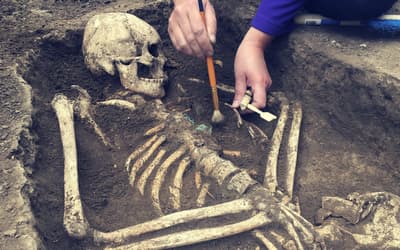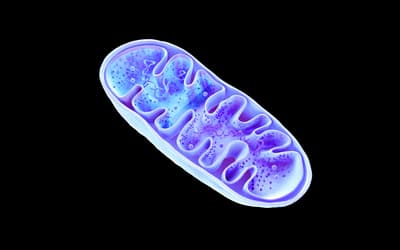
pp. 1–38 •
Dr. Andrew A. Snelling
Without accurately known decay half-lives, all radioisotope ages cannot be accurately determined or be considered absolute ages.

pp. 39–43 •
Joshua Cedar
A bas-relief carving from the 12th–13th century Ta Prohm temple in Angkor, Cambodia is hailed as a possible depiction of a recently living stegosaur.

pp. 45–54 •
Jeffrey P. Tomkins
Taken together, genomic data for both the alleged fusion and cryptic centromere sites refute the concept of fusion in a human-chimpanzee common ancestor.

pp. 55–56 •
Matthew McLain
The best hypothesis for the origin of the H. naledi assemblage in the Dinaledi Chamber is still intentional burial/disposal by other H. naledi.

pp. 57–62 •
Todd Charles Wood
Recent articles have questioned the validity of hominin baraminology studies that place Homo naledi in the human holobaramin.

pp. 63–70 •
Jean O’Micks
Baraminic analyses suggest that both H. naledi and H. floresiensis are not part of the human holobaramin.

pp. 71–88 •
Dr. Timothy L. Clarey
The evidence for a large impact at Chicxulub may not be as strong as generally believed. A case can also be made that there was no impact.

pp. 89–101 •
Dr. Danny R. Faulkner
We ought not to dismiss the observational science for dark matter over fears of the misuse of dark matter in historical science.

pp. 103–114 •
Jean O’Micks
This study provides further evidence that Homo naledi is indeed not a member of the human holobaramin, but related rather to australopiths.

pp. 115–120 •
Kevin Short
Denis Lamoureux seeks to resolve perceived contradictions between science and Scripture by persuading that Scripture is not inerrant.

pp. 121–167 •
Dr. Andrew A. Snelling
Problems remain in the interpretation of the measured Pb isotopic ratios to transform them into ages.

pp. 169–179 •
Henry B. Smith, Jr.
The strong likelihood is that the primeval chronology of the Septuagint reflects most of the numbers that Moses originally recorded in Genesis 5 and 11.

pp. 181–182 •
Stefan Frello
Dr. Nathaniel Jeanson claims to have documented a recent origin of humans, using mitochondrial DNA. A reader questions the results.

pp. 183–186 •
Dr. Nathaniel T. Jeanson
Frello criticizes papers that he hasn’t carefully read. Not surprisingly, his objections turn out to be unfounded.

pp. 187–194 •
Jean O’Micks
, et. al.
We review four main sections of the book starting with his first trip to Tanzania, H. floresiensis, Australopithecus sediba, and Homo naledi.

pp. 213–220 •
David Woetzel
Artwork at Cambodia’s Angkor Wat temple appears to depict a dinosaur. Though the engraving is “stegosaur-like,” this interpretation has been criticized.

pp. 221–235 •
Harry Dickens
North America’s Proterozoic geology provides evidence for enormous erosion and the formation of extensive water flow systems, even spanning the continent.

pp. 237–238 •
Stefan Frello
This is a short reply to Dr. Nathaniel Jeanson’s response to my comment to his work on human mtDNA.

pp. 239–241 •
Dr. Nathaniel T. Jeanson
I am pleased to see that the young-earth creation (YEC) critic, Stefan Frello, seeks to continue our exchange of ideas.

pp. 241–243 •
Jean O’Micks
According to the evolutionary concept of encephalization, endocranial volume increases from more primitive species to more developed ones.

pp. 245–258 •
Dr. Danny R. Faulkner
There are old supernova remnants and stage three supernova remnants have been identified. Therefore, this may not be a good argument for recent origin.

pp. 259–270 •
Dr. John H. Whitmore
, et. al.
Size and roundness statistics were generated for 17 samples. The quartz and K-feldspar showed statistically significant rounding from the beach to the dune.

pp. 271–283 •
Dr. Timothy L. Clarey
, et. al.
The published global sea level curve is inaccurate in an absolute sense, and the Sauk megasequence represented only a partial start to the global Flood.

pp. 285–292 •
David Woetzel
Why should there be such “gratuitous beauty”? The plethora of extravagant biological characteristics prominently call out for an explanation.
























